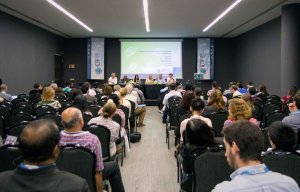
ICNF2019 calls for papers
Opinion


The JEC Composites show is always characterised by a high level of innovation from an industry that now employs 550,000 professionals worldwide and generates an estimated €72 billion in revenues.

12th March 2012
Adrian Wilson
|
The JEC Composites show is always characterised by a high level of innovation from an industry that now employs 550,000 professionals worldwide and generates an estimated €72 billion in revenues.
This year’s show, which takes place from March 27-29 at Porte de Versailles, will be no exception, with achievements officially recognised ranging from the world’s longest and most sophisticated wind blade to a bike frame and even a new car body made by advanced braiding techniques.
Carbon fibres and fabrics are once more at the core of many developments, with the advantages they have brought to the aerospace industry now transferring to the automotive sector and beyond.

The UK’s Axon Automotive, for example, working with fibre supplier Toray, braiding specialist Eurocarbon and resin supplier Scott Bader, will receive a JEC Innovation Award for its all-carbon primary vehicle structure that, at 500 kg, weighs 50% less than comparable conventional vehicles.
The car draws on an internationally patented technology called Axontex and its innovation is in using a braid over a foam preform to effectively create a 3D woven structure from multiple preforms that are machine-laid and infusion-moulded into beams. These beams have an internal structure that can resist buckling and deformation.
Low-density, closed-cell polyethylene foam forms the core of the preform, which is formed in a closed tool with multiple cells under vacuum (the VARTM process). The foam core expands during this process to take the shape of the tool. Of special significance are the shear webs internal to the beam, which provide its high strength and stiffness while retaining a low weight and allowing high levels of shape and curvature within the components.
Working with its suppliers, Axon has also been able to apply a new resin system which increases toughness while retaining the conventional stiffness and strength of epoxy at lower cost and greater tailorability.
The advantages are pretty self evident, allowing a very light vehicle to be produced with low tooling costs which make profitable scalable production possible.
More advanced carbon fibre structures have been developed by another 2012 Innovation Award winner – Braid, a spin-off from the Technical University of Munich
Most carbon fibre bike frames are made from preimpregnated fabrics (prepregs) with their shapes cut out and cured in an autoclave to form parts that are then bonded, filled up, smoothed and finally coated.

This, however, is a very labour-intensive process, and it is perhaps no surprise that virtually all carbon fibre frames are manufactured in China.
Braid, however, has developed a fully automatic alternative by employing advanced braiding technology, with which carbon fibre bundles are continuously and precisely draped onto a tube-like inner core. As a consequence, the butt joints of the half-shell tubes can be eliminated, with the load-taking carbon fibres providing the precise structure and increasing the frame strength.
The ability to fully automate the placement of the carbon fibre is a key advantage in both minimising manual work and consequently optimising quality by eliminating any potential errors.
Braid will begin commercial production of the frames in Germany during 2012, with support of the country’s EXIST seed finance programme.
The wind energy industry is one sector which doesn’t require the advance performance of carbon fibre materials, with glass fabric sufficing for most of its needs, and even natural fibre alternatives such as flax proposed in recent years.
Which is not to say that wind blades are not becoming more sophisticated.

G10x blades, developed by Spain-headquartered Gamesa with both Spanish and Danish partners and another JEC Innovation Award 2012 winner, include several subsystems that provide new capabilities.
Strain sensors embedded in the laminates reduce the loads transferred to the wind turbine, while preload sensors in the bolts of the intermediate joint ensure that all blades are properly assembled. A high-efficiency lightning protection system and a light beacon at the tip of the blade are other product additions.
The JEC Composites Innovation Awards recognise the developers of new products in no less than 13 categories, making them too numerous to list here. These in turn, however, are just a fraction of the new developments to be found at the JEC Composites show, making it a must visit for textile technologists and materials specialists from many sectors.

Business intelligence for the fibre, textiles and apparel industries: technologies, innovations, markets, investments, trade policy, sourcing, strategy...
Find out more